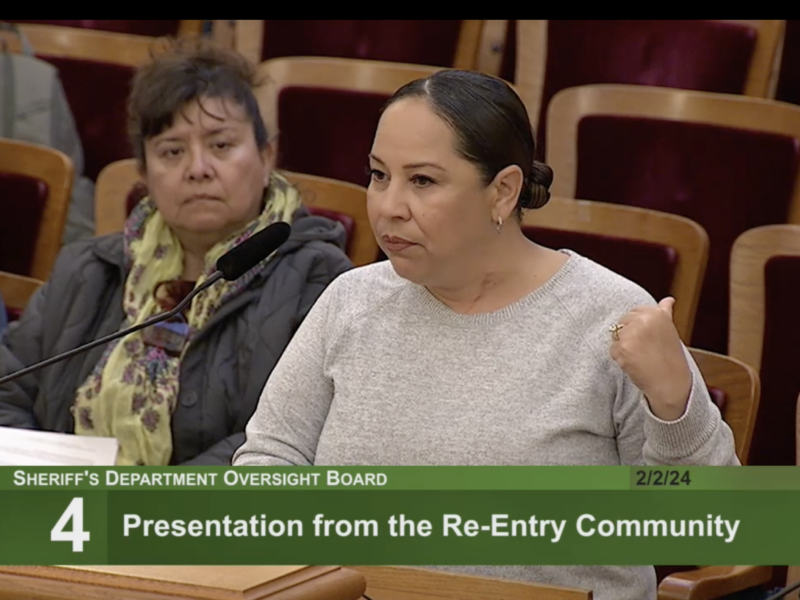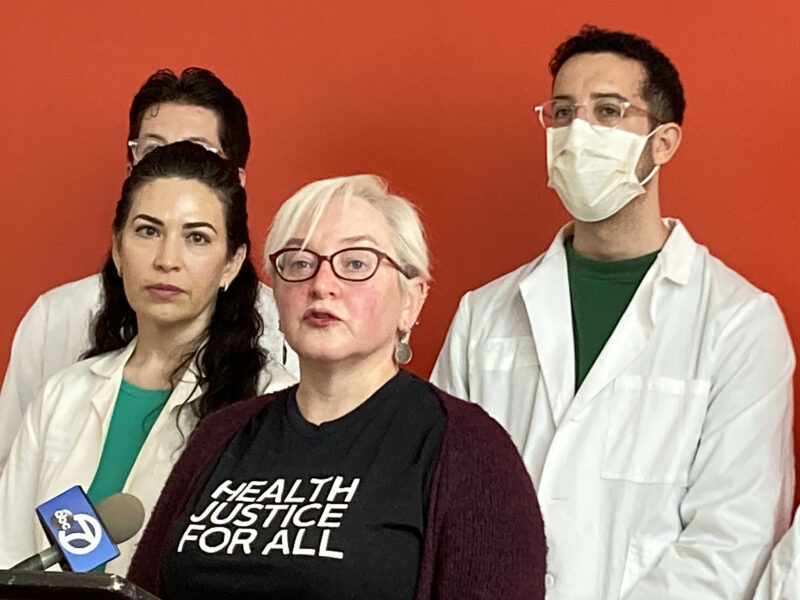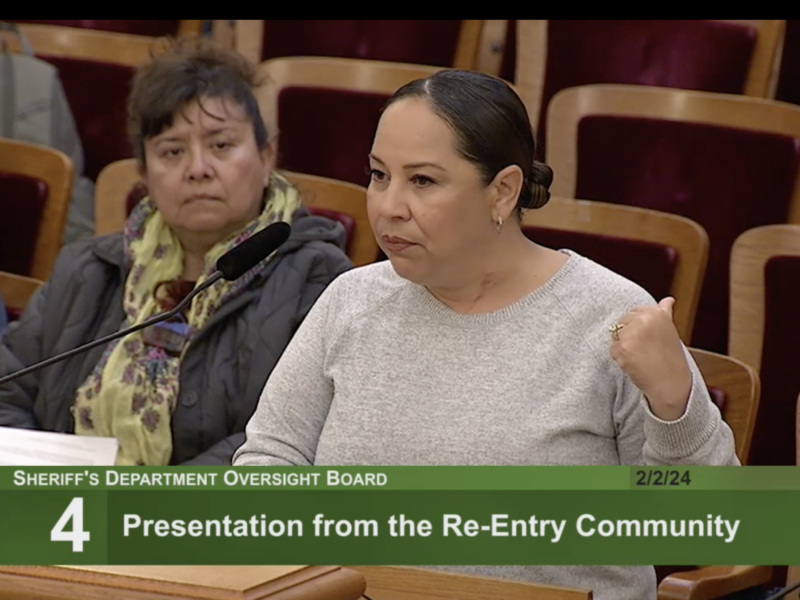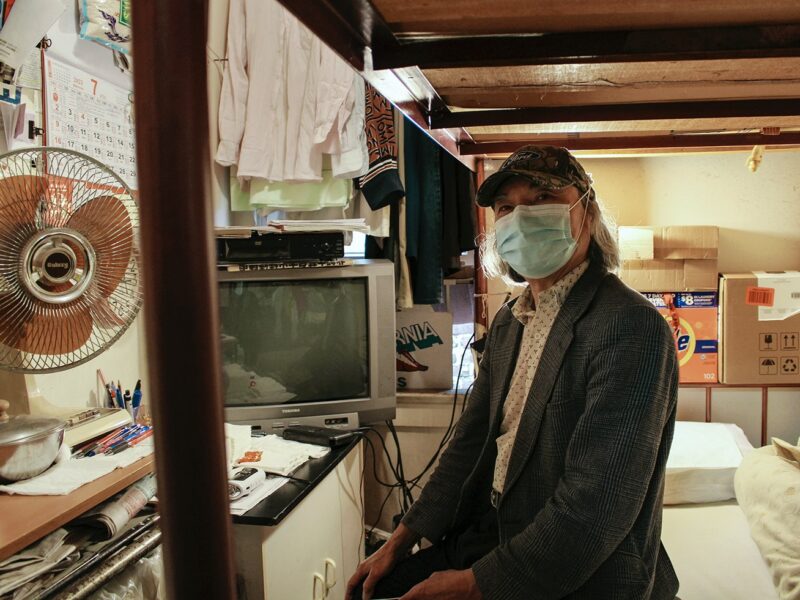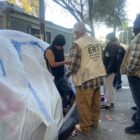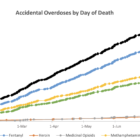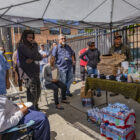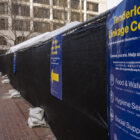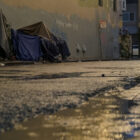La falta de programación en español es un problema crecientemente grave ya que el encarcelamiento de latinos ha aumentado desde el lanzamiento el junio pasado de una ofensiva policial contra las drogas en los vecindarios de Tenderloin y sur de Market. • Read in English: https://www.sfpublicpress.org/service-providers-demand-access-to-latinx-jail-inmates
Aging
For Chinatown’s Older Residents in SROs, Climate Disasters Pose Greater Risks
Chinatown faces higher threats during periods of extreme weather due to a range of socio-economic factors as well as the built environment. Within the neighborhood, older adults living in single-room occupancy buildings are among the populations at heightened risk. Reasons for this include physiological changes related to aging and financial barriers associated with making climate-resiliency adaptations to older buildings.
Health
SF ‘Failing’ on Housing as Overdose Solution, Health Expert Says
Sarah Evans has spent decades advancing drug overdose prevention initiatives around the world. As a division director for Open Society Foundations — a grantmaking network founded and chaired by business magnate George Soros — Evans promotes one surefire way to help abate San Francisco’s homelessness and fatal overdose crisis: housing.
“The way that people get off the street is by getting into housing, where people can get support and stay there even while they are continuing to struggle with substance use disorders of all kinds and mental health issues,” said Evans, who leads the organization’s drug policy programs globally. “It literally is the only way.”
San Francisco isn’t doing enough to meet this housing need, according to health experts.
Health
San Francisco’s Fatal Overdose Crisis Was Decades in the Making
As San Francisco continues to search for solutions, our team at “Civic” is exploring the origins of the city’s opioid overdose crisis, what has been done to help and what might be making things worse. After six months of research involving hundreds of studies, reports and archival news clippings, and three dozen interviews with people with lived experience and professional expertise in homelessness, addiction, medicine, criminal justice, housing, social work, street outreach, business, education, harm reduction, policymaking and advocacy, we’re launching the series, “San Francisco and the Overdose Crisis.”
Over six episodes, the series will explore what influenced rampant opioid addiction and its connection to homelessness, the 150-year history of policing and prosecuting drugs in San Francisco, the long battle to open a safe consumption site in the city, and grassroots efforts to stem the tide of drug-related fatalities.
Overdose Crisis
City Leaders at Odds as Overdose Deaths Trending Toward Record High
Accidental drug overdose deaths continue to torment San Francisco, according to data released Tuesday by the city medical examiner’s office.
While June saw the lowest monthly number of overdose deaths this year, 54, in July it climbed back up to 71. With 473 overdose deaths this year, San Francisco is on track to surpass its highest recorded number of overdose deaths in a calendar year — 725 in 2020.
Homelessness
Berkeley Says It Was Aggressive in Homeless Encampment Sweeps, Promises Reforms
Berkeley is accelerating plans to more humanely deal with homelessness in the wake of a San Francisco Public Press report on a chaotic encampment raid in October, and city staffers say they will start collaborating with unhoused people and homeless advocates when planning to clean or clear large encampments.
Several city departments are changing procedures in response to complaints from those living in encampments and their advocates, and from residential and commercial neighbors.
Health
With Overdose Deaths Surging, Critics Chide City, State for Curbing Safe Consumption Centers
San Francisco’s chief medical examiner delivered grim statistics last week about a recent increase in deaths related to drug use. In the first three months of the year, 200 people died of accidental overdose. That’s up significantly from the first quarter last year, with 142 deaths.
These tragedies were disproportionately suffered by marginalized groups. The biggest increase in deaths occurred among those who lacked housing. People listed as having “no fixed address” accounted for 61 overdose deaths in the first quarter, up from 26 during the same period in 2022. Black residents accounted for 33% of fatal overdoses in the first quarter this year, despite representing only 5% of the city’s population.
Addiction experts say the recent increase in overdose deaths could be linked to the closure of the Tenderloin Linkage Center, a temporary facility that operated in United Nations Plaza from January to December 2022 to help drug users and people without housing access supportive services.
Featured in Category
Facing Brutal Storms, Homeless People Encountered Hurdles to Finding Shelter
Despite San Francisco officials’ attempts to get ahead of storms, many unhoused people said they were having a hard time accessing shelter beds and other resources to protect them from the rain.
Bay Area
Public Records Referenced in Oct. 4 Berkeley Encampment Sweep Article
1-Redacted_Incident-Report-22-46598Download
2-RE_-Campers-parked-for-weeks-across-the-streetDownload
3-Memorandum-to-City-Manager-on-Harrison-Corridor-9.26.22Download
4-RE_-Eighth-Street-Campers-UpdateDownload
5-RE_-Camelia-Street-encampmentDownload
6-Follow-up-Report-on-Harrison-Encampments-29Download
Homelessness
San Francisco Rations Housing by Scoring Homeless People’s Trauma. By Design, Most Fail to Qualify.
Co-published with ProPublica.
Tabitha Davis had just lost twins in childbirth and was facing homelessness. The 23-year-old had slept on friends’ floors for the first seven months of her pregnancy, before being accepted to a temporary housing program for pregnant women. But with the loss of the twins, the housing program she’d applied to live in after giving birth — intended for families — was no longer an option.
A few weeks later, Davis was informed that the score she’d been given based on her answers to San Francisco’s “coordinated entry” questionnaire wasn’t high enough to qualify for permanent supportive housing. It was a devastating blow after an already traumatizing few months.
Health
Surge in Overdose Deaths Is a Puzzle Public Health Experts Are Desperate to Solve
In San Francisco, drug overdoses killed more people than did COVID-19 in the first two years of the pandemic — 711 deaths in 2020, and 645 in 2021. These figures are troubling, even without counting nonfatal overdoses and other suffering associated with this crisis. While fentanyl is often cited for the rapid increase, many factors contribute to this trend both in San Francisco and nationally.
